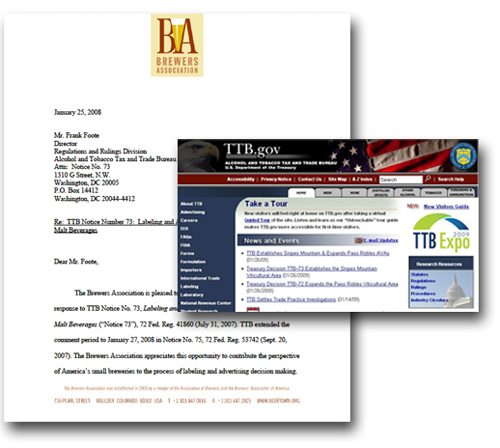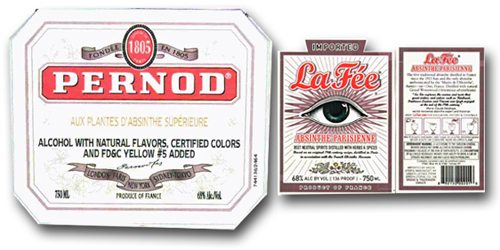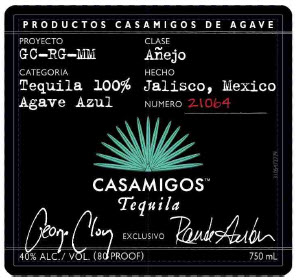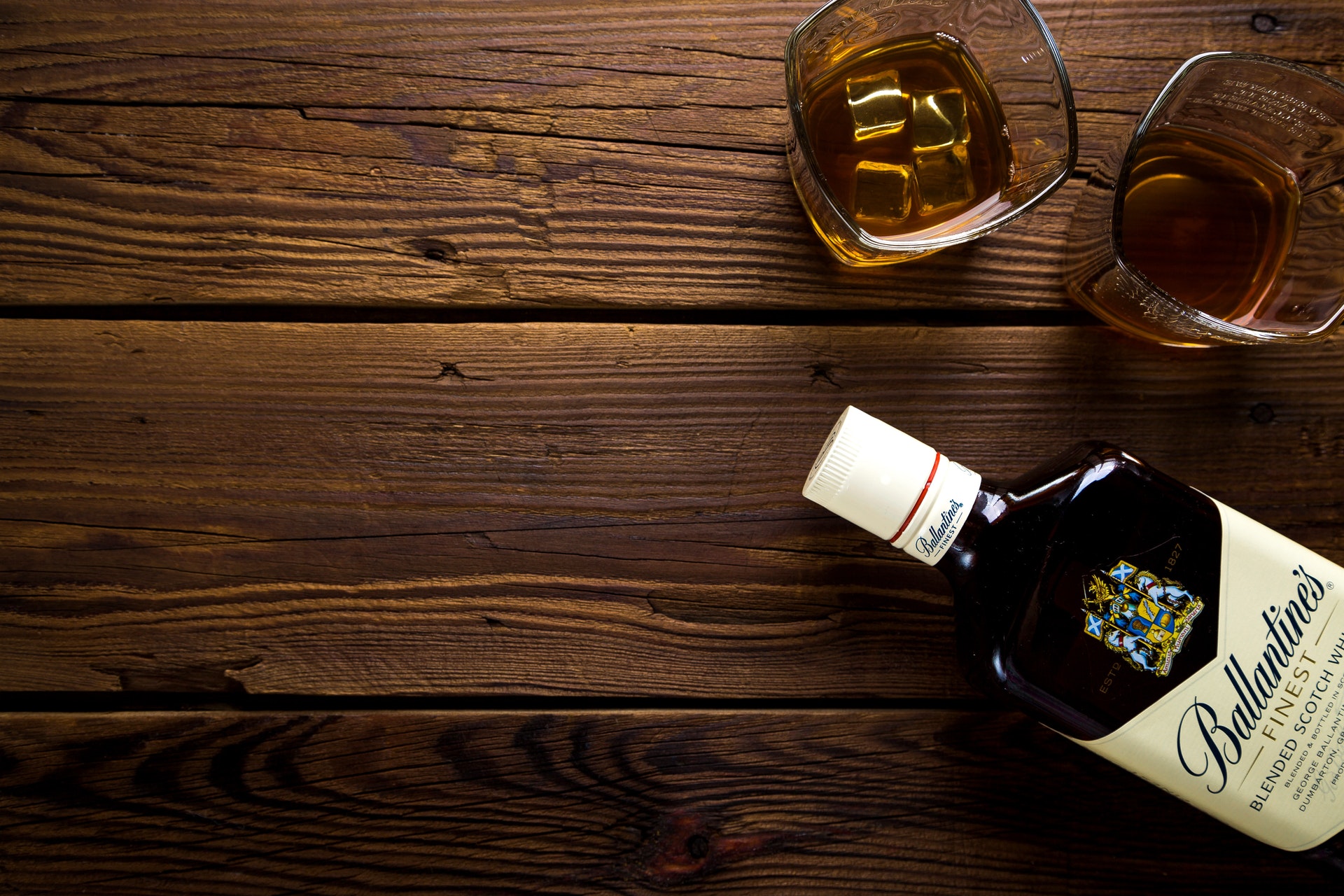Plenty of labels call attention to feminine endowments, but we haven’t seen too many labels that point so directly to male equipment. Well Hung wine is produced and bottled by Virginia Wineworks of Charlottesville, Virginia. The back label brags that “Our wines stand up to any occasion!” Any other good examples out there?
Brewers Association Comment; Top 5 Things to Know
It is likely that all beer, wine and spirits labels will change dramatically in the near future. TTB has been working on new rules since CSPI and other groups submitted a petition in 2003. The new rules would require a “Serving Facts” panel on every container. This panel would include a lot more information, such as the typical serving size, number of servings per container, calories, carbohydrates, protein and fat. Because this is a big, controversial change, TTB has received more than 18,000 public comments during the past few years. There are far too many comments for most people to review, and so we will highlight and summarize the most noteworthy comments here. The most recent proposal and comments are here. This is comment 10 in a series; to see others, click on the “serving facts” tag below.
The Brewers Association represents about 1,400 small brewers across the US. The Association’s 29-page comment said:
- Compliance will be expensive and lead to fewer products in the market.
- A 12 ounce serving size makes sense for normal beer, but modern brewing “allows for malt beverages to be fermented over 27% ABV” and for those over 20%, a reasonable serving size would be just 2 ounces.
- 100% of small breweries will be affected by the proposed rule and 38% said “they would cease bottling operations if a serving facts panel is required.”
- TTB should allow a linear display and greater tolerances.
- TTB should stick with alc./vol. labeling as opposed to the amount of pure alcohol or a graphical depiction.
Pernod Absinthe
Here (above) is the COLA for Pernod Absinthe, at long last. It was extremely difficult to find, in TTB records, and a lot of absinthe enthusiasts have been looking for the COLA for upwards of a year. For example, Alan Moss’ Real Absinthe Blog does a great job tracking all the US-approved absinthes, but he too was not finding the approval. As of today his blog says “Pernod Aux Extraits de l’Absinthe: announced … for July 2008 launch. … Where is the label approval?”
We think it’s fairly interesting that the Pernod label, for some reason, lists CERTIFIED COLORS AND FD&C YELLOW #5 in big text on the front label. But the comparable La Fee absinthe shows “caramel color & certified colors FD&C Blue #1 & FD&C Yellow #5” in much smaller text, on the back label.
China Silk Cabernet, Vintage 4707
China is of course coming on strong in many fields, such as athletics and car production. And now it looks like China’s alcohol beverages, too, are modernizing. China Silk (as above) has a somewhat more modern label, compared to most Chinese wines we have seen over the years. Imperial Jade is also made in China and is a lychee flavored vodka. The front label claims it’s filtered eight times through jade and charcoal. The back label helpfully explains that jade “symbolizes strength, nobility, perfection and immortality.” It must be powerful stuff because it also embodies “wisdom, compassion, modesty, justice and courage.”
TTB Took His Label Away
And he’s not pleased about it. It’s just a piece of paper but it can provoke amazingly strong reactions. When it gets rejected, lost, delayed, revoked. And also when it gets approved. I would love to know what label and what company are behind this tale of woe. This blog does not necessarily condone any of the views expressed in this video, but we were mighty surprised to find a rock song about, of all things … ALFD. In our experience TTB almost never loses things, so we eagerly await TTB’s video response. Here is an example of a good video response from another context.
Plenty of COLAs
We like to think of the COLA database as a microcosm for the US economy. This got us wondering whether the economic meltdown has tamped down the number of labels submitted to and approved by TTB.
In blue, above, is the S&P 500 Index from late 2004 through February 23, 2009. It shows the meltdown, from roughly the beginning of 2008 through February 23, 2009; a drop of 712 points or about 48%.
In red are the number of TTB labels approved, during the December through January (2 month) period each year. We picked this 2-month time period because it best allows a comparison to the ugly last month of 2008 and first month of 2009. The red line shows no falloff in the number of labels approved each period, with 14,151 labels approved during the most recently completed two month period (and 11,041 approved during the comparable period from 12/1/2004-1/31/2005). It’s nice to see a graph that’s not headed south, and this should bode well for variety at the store, and many interesting labels to showcase here in the near future.






